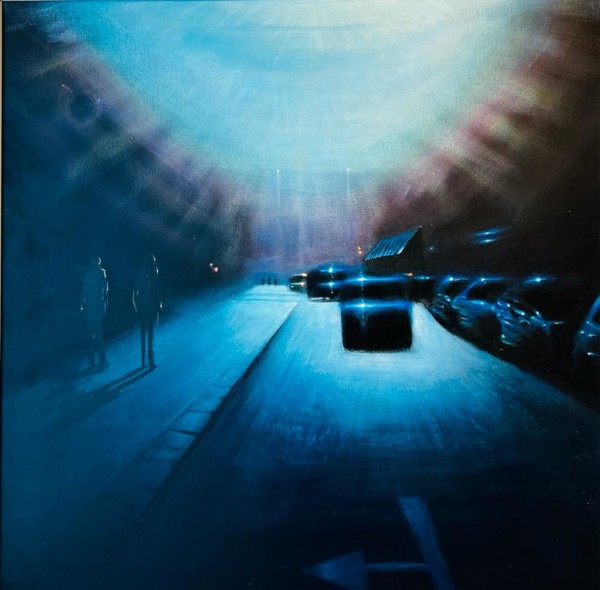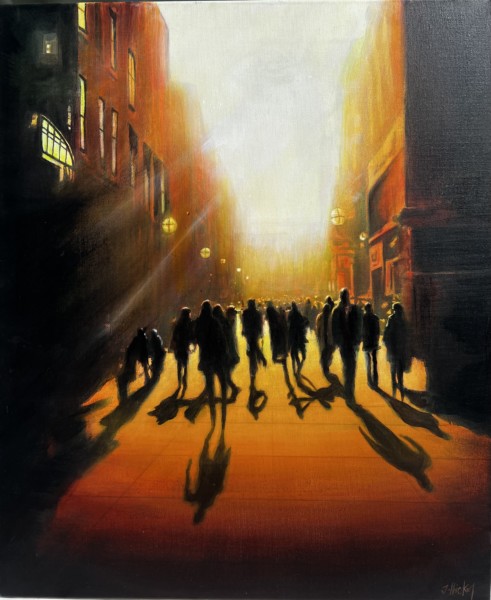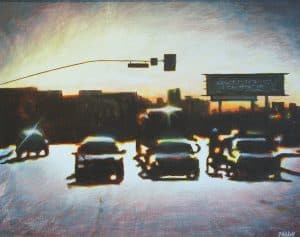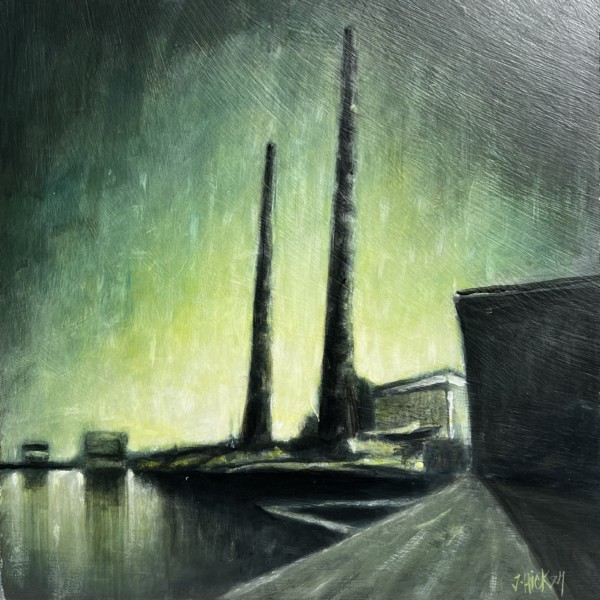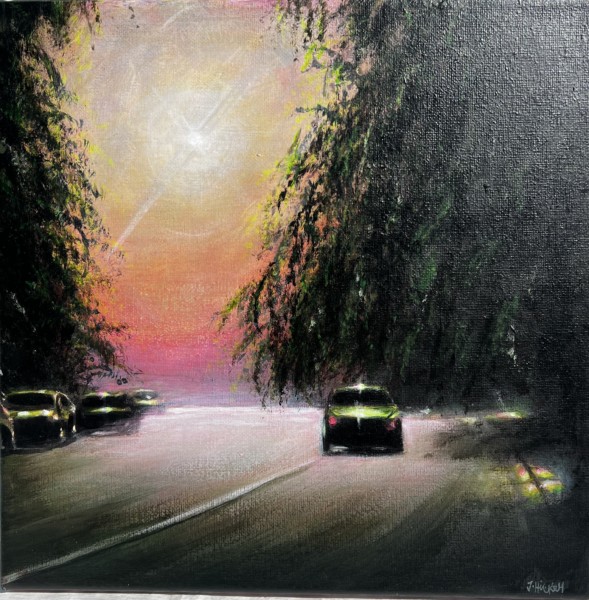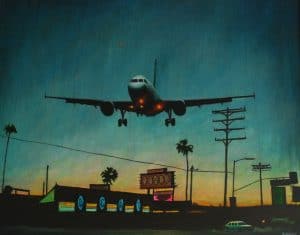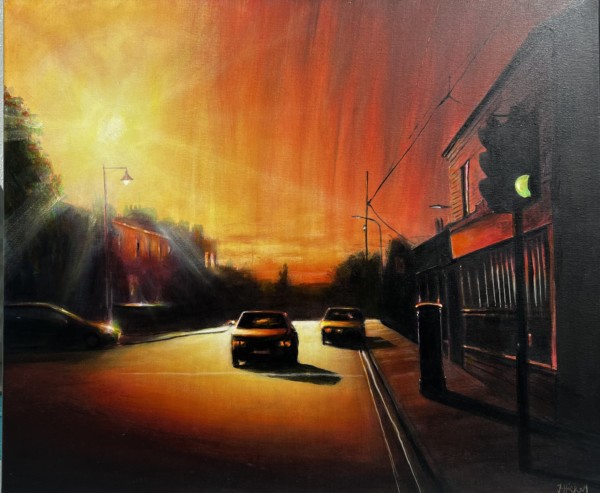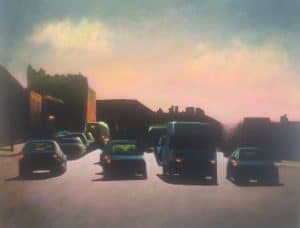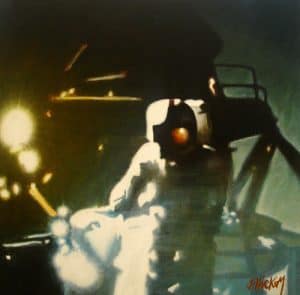Joby Hickey
Joby Hickey spent the first few years of his life in the smaller islands of Greece. He has early memories of the smell of oil paints from his father Patrick Hickey’s studio, and the old Victorian printing press that his father used when printing etchings. He picked up art at an early age and found after a while some parts of Art College a bit too formal and clichéd because his father had taught him for most his life. He then went to London to work in film and documentaries in the camera department where he worked on and off for five years.
In 1990, Joby participated in his first group show at the Irish cultural centre “Comhaltas Ceoltoiri na Eireann”. In 1996 Harvey Nicholls, displayed several of Joby’s larger canvases in their London store and the following year he submitted and was accepted in the RHA Annual Exhibition, Dublin, where his huge painting of a blue kettle was purchased by Dermot Desmond. In 1999 Joby took part in a two-man show the old Woolworth’s building, Ballina, Co. Mayo. Also that same year he was launched into the London art world with a series of group exhibitions in Islington, which were held in 2000 and 2001. Around that same time, Joby’s work also featured on the front of the English monthly “Galleries” magazine. Later in 2001 his work was put in the London Art Fair. Earlier this year he took part in the New York Art Fair where Tiffany’s board purchased four of his paintings for their private and public collections. He was also represented in two group shows in Dublin city centre this year.
Most of Joby’s work deals with the lighting on cars, buildings and streets. He says that cars and traffic seem natural to him. “I see more cars a day than trees. I suppose that’s just what I look for.” When he creates a work of art he looks at the subjects as a whole and eliminates the “ugly parts”. Our eyes are trained to recognise shapes as certain objects. The shapes Joby paints, if viewed individually, do not look like anything, but put together with other unrecognisable shapes, we know them as everyday universal objects. His work points to how cars, through technology have interfered with human communication and our sense of community, giving a barren feeling. “I rarely try to verbalize my work, as I think it has a visual language of its own. If I could, I would be a writer and I’m not. I think my paintings are self explanatory.” His works are also in collections in Paris, Tokyo, Brussels, LA, London, and Switzerland. Joby was voted one of ten finalists earlier this year out of 3000 short films, for his film “world war two”, which featured in various festivals. “I sometimes see my paintings as single shots from a film.”
 Joby Hickey spent the first few years of his life with early memories of the smell of oil paints from his father Patrick Hickey's studio, and the old Victorian printing press that his father used when printing etchings.
Enquire
View Artworks
Joby Hickey spent the first few years of his life with early memories of the smell of oil paints from his father Patrick Hickey's studio, and the old Victorian printing press that his father used when printing etchings.
Enquire
View Artworks

